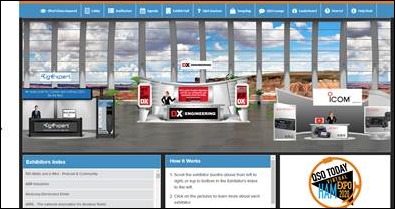EPtalk by Dr. Jayne 8/13/20

For many practices, it’s a COVID-related surprise and not necessarily a fun one. New national requirements for COVID-19 testing data went into effect August 1. Ordering physicians now have to supply demographic information to help public health agencies track the disease’s spread and identify areas that are seeing large number of cases.
The requirements were included in the Coronavirus Aid, Relief, and Economic Security (CARES) Act. It requires that laboratories that test for COVID or its antibodies report 18 data elements to HHS. Some of them don’t typically appear on a lab requisition, such as race, ethnicity, and county of residence. There are also “ask at order entry” questions to identify whether the patient is a healthcare worker, whether they are housed in a residential setting, whether they are pregnant, or if they have been hospitalized.
Labs are pushing back on practices to supply this information when tests are ordered rather than having to track it down manually. Depending on how up-to-date your EHR is and how well it supports the use of these fields during laboratory ordering, you may or may not be compliant.
I worked with several practices this week who were not compliant and were trying to become so after receiving complaints from their lab vendor. Fortunately, I was able to do some workarounds for the paper requisitions that accompany specimens, but I won’t be able to modify the lab interfaces without support from the vendor.
My participation in the ONC Tech Forum this week was interrupted by the crisis with the lab requisitions, although I would have stepped away and helped my client regardless of whether the conference was in-person or virtual. That’s one of the joys of doing what I do in healthcare IT, as I help practices and organizations navigate the many challenges that get thrown their way.
I was glad to hear National Coordinator for Health IT Don Rucker talk about the utility of health information exchanges in dealing with the COVID pandemic. He acknowledged that we have a way to go before we’re going to be able to make the most of data exchange and the ability to share patient information. He called out the ability for HIEs to receive data for organizations that might not be top of mind for care delivery, such as group homes and shelters. My state has a long way to go with regards to HIE, so I’m fairly convinced that having a truly functioning system that shares data from all physicians at any point before I retire is just a pipe dream.
This week has been all about preparing proposals for potential consulting gigs, so I’m actually looking forward to going back to the clinical trenches this weekend. What I’m not looking forward to are the hundreds of charts awaiting my signature for the shifts I worked prior to vacation. I tried to work on them while I was out of the office, but our Citrix platform is unstable unless you access it from the internal network. They don’t have any incentive to investigate the issue since it doesn’t matter to them how arduous the chart signing process might be. The ongoing message is for us to be happy we haven’t had pay cuts or layoffs, so most of us are just staying quiet. Such is the state of healthcare in the US these days, and my colleagues elsewhere are sharing the same kinds of stories.

The American Medical Informatics Association has booked Anthony Fauci, MD for a special fireside chat at its Virtual Annual Symposium to be held November 14-18. The session will only available to registered conference attendees. I’m sure it will have a lot of people on the edges of their seats. The man was already a legend prior to COVID and having served as an advisor for six US presidents speaks for itself. I enjoy his matter-of-fact style and can’t wait to see what he has to say. Apparently I’m not the only one that likes his style since the Dr. Anthony Fauci Fan Club group on Facebook has over 150,000 members.

A friend of mine knows that I’ve been checking out various virtual conferences since the pandemic started and invited me to visit something a little out of my subject matter area. The QSO Today Virtual Ham Expo was the gathering place for thousands of amateur radio operators over the weekend. I have to admit I really liked their platform. They had a virtual expo hall where you could see various “booths” and click on them for a virtual visit and even a live chat. Accessing speaker sessions was very easy even after the conference ended, with the sessions presented as embedded videos within the agenda.
Since amateur radio operators tend to be pretty techy, most of the videos I sampled had reasonably good production values and excellent audio. It was interesting to see how another industry is handling the problems we face, and with over 21,000 registrations, it’s certainly comparable to a healthcare conference.
A couple of friends at software companies say they are working on their own platforms for virtual user groups. I hope they are doing plenty of usability testing and focus groups with prospective attendees. I’ve been to good conferences and bad ones, and there’s definitely a negative impact if the tech isn’t good, the speakers aren’t prepared, or the background filters are doing funky distracting things.
Most of the vendor user groups that I’ve attended are part education, part rah-rah sessions to try to bond users to the company and help them forget all the crummy things the software does to them on a daily basis. It’s going to be hard to get that vibe going virtually unless they really work at it with specific engagement sessions and bulk-mailed swag like they did with the recent InTouch Health / Teladoc conference.
I’d love to hear from vendor folks about how they are planning to approach virtual user groups and the challenges they are facing. I promise to keep you anonymous. If you’re a potential attendee, what are you looking forward to or dreading with virtual conferences? Leave a comment or email me.

Email Dr. Jayne.


Neither of those sound like good news for Oracle Health. After the lofty proclamations of the last couple years. still…